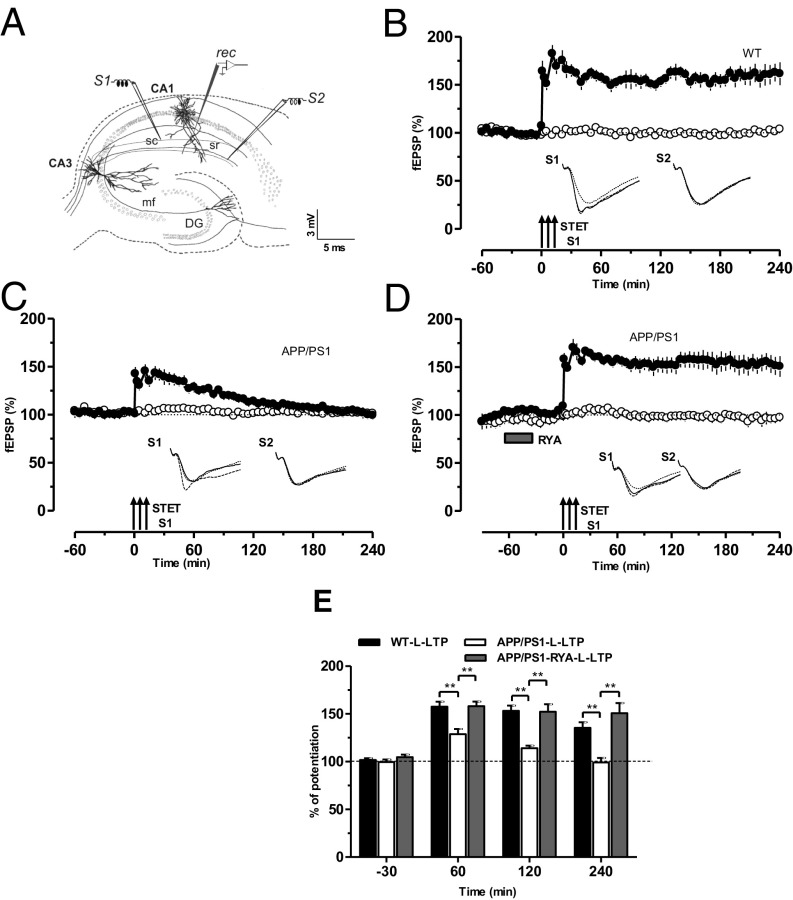Fig. 1.
RyR priming rescues the impaired L-LTP in APP/PS1 mice. (A) Schematic representation depicting the independent but convergent inputs onto pyramidal cells in the CA1 region of a hippocampal slice in vitro. The recording electrode (rec) placed in the stratum radiatum of CA1 records two independent fEPSPs elicited by the activation of two different inputs, S1 and S2, to the same neurons. DG, dentate gyrus; mf, mossy fiber; sc, Schaffer collaterals; sr, stratum radiatum. (B) A typical L-LTP induced by STET (arrows) in S1 (filled circles) in WT mice. Open circles represent a control stimulated synaptic input S2, which was stable for the whole recording period (n = 7). (C) Experimental design was the same as in B, but STET was applied to S1 to induce L-LTP in APP/PS1-derived slices, which resulted in LTP lasting less than 120 min (filled circles) without affecting the control input S2 (open circles; n = 7). (D) Priming of the hippocampal slices from APP/PS1 mice via bath application of RyR agonist RYA (gray rectangle; 10 µM) for 30 min and then washout for 30 min before the induction of LTP in S1 significantly increased the induction and persistence of L-LTP in S1 (filled circles). Control stimulation of S2 (open circles) revealed relatively stable potentials for the time course investigated (n = 8). (E) Bar graph represents the difference in the percentage of potentiation at −30 min, 60 min, 120 min, and 240 min after the induction of L-LTP between the three different conditions presented in B–D. Asterisks at 60, 120, and 240 min represent statistically significant potentiation (**P < 0.01) with the compared group. Triplets of arrows represent STET applied for inducing L-LTP. Insets in each graph represent typical fEPSP traces recorded from synaptic inputs S1 and S2 at 30 min before (dotted line), 30 min after (broken line), and 4 h after (continuous line) induction of L-LTP. All data are plotted as mean ± SEM. Error bars indicate SEM. Calibration bar for all analog sweeps: 3 mV/5 ms.

